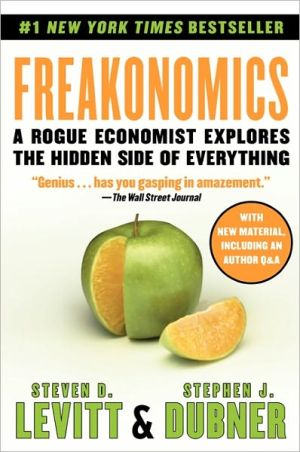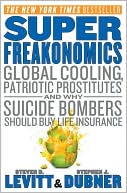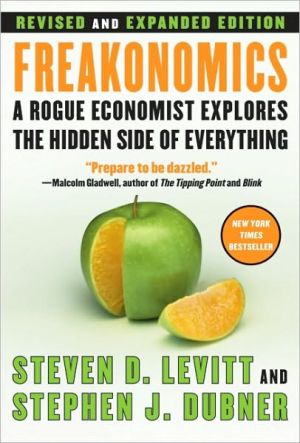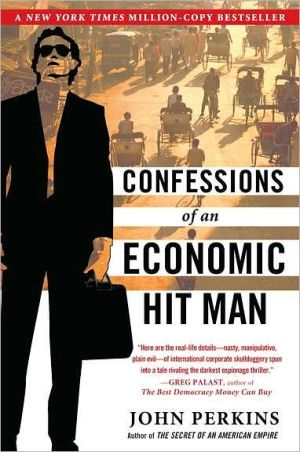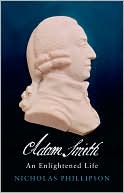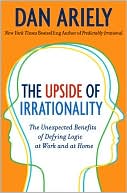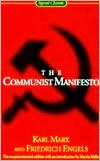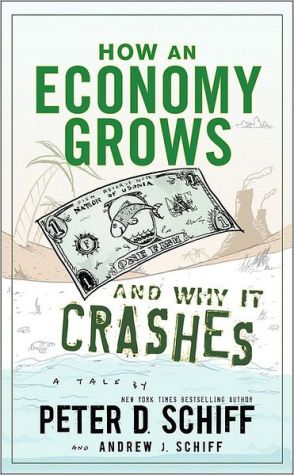Human Goods, Economic Evils: A Moral Approach to the Dismal Science
Much of modern economic theory is based on a rather unflattering view of human nature, one that is essentially selfish and materialistic. Not surprisingly, this incomplete version of human anthropology makes for some rather incomplete economic theory, argues Edward Hadas in Human Goods & Economic Evils. Instead of simply being utility maximizers, Hadas argues human beings also seek to maximize morality in their everyday economic lives. For Hadas, economic man is moral man,...
Search in google:
Much of modern economic theory is based on a rather unflattering view of human nature, one that is essentially selfish and materialistic. Not surprisingly, this incomplete version of human anthropology makes for some rather incomplete economic theory, argues Edward Hadas in Human Goods & Economic Evils. Instead of simply being utility maximizers, Hadas argues human beings also seek to maximize morality in their everyday economic lives. For Hadas, economic man is moral man, who always strives for the good according to his nature. While the weakness of human nature ensures that the good is never fully achieved, economic activity is nevertheless best understood as part of the great moral enterprise of humanity. Human Goods & Economic Evils does not claim that the basic economic activities of laboring and consuming are the most important things in life, but they are literally vital, and as such deserve to be studied and understood through a more morally sympathetic view of human nature. With this in mind, Human Goods & Economic Evils provides both lay readers and policymakers the intellectual tools necessary to judge what is right and what is wrong about the modern economy, and returns the study of economics to its proper, more humanistic sphere. Biography Edward Hadas, who holds a B.A. in Philosophy from Oxford and an MBA from the State University of New York, writes about economics and finance for Breakingviews.com, an internet financial commentary service based in London. He also teaches and writes about Christian citizenship and social & political philosophy at the Maryvale Institute in Birmingham, UK.
Human Goods, Economic Evils\ A Moral Approach to the Dismal Science \ \ By Edward Hadas \ ISI Books\ Copyright © 2007 ISI Books\ All right reserved.\ ISBN: 978-1-933859-27-9 \ \ \ \ Chapter One\ What Are We Talking About? (I) \ What Is Economics?\ For most of this book, I will try to answer the question "What is economics?" from the perspective of individuals, workers (or laborers, as I will call them), and consumers who engage in economic activity. This first chapter, however, is a description of the economy as a whole, that is, as an aspect of society. The economy, or economic organization, is indeed only one aspect, which has to fit in with many others-including politics, warfare, artistic endeavor, religion, education, and families. Speaking roughly, the distinctly economic aspect of society includes everything that has to do with jobs and shopping, with the things that are worked at and the things that are bought. The economy takes in most of what happens on farms, in mines, factories, warehouses, stores, financial markets, telephone networks, and so forth. The economy also takes in a smaller portion of what happens in homes, schools, and health-care systems.\ This chapter attempts to identify the most important features common to all economic organizations. A casual study of the newspapers, or of the economic commentators they cite, might suggest that there is not much common ground. When the experts talk about economic systems, they mostly discuss differences-between the U.S. free market and the European social economy; between the open developing economies that follow the Washington consensus and those that adhere to a more protectionist model; or perhaps between Communist-style central planning, treated either as a fading dream or a looming threat, and something distinctly Scandinavian. Further, all rich countries are different from all middle-income countries, and both are quite different from the poor.\ While these differences are certainly important, they are not great enough to preclude a basic unity of all economic organizations. At the most basic level, there is the unity behind the word itself. Just as the differences among religions are significant, but the ability to describe them all as "religion" shows the existence of some common concern, leading to a philosophy of religion, the fact that an economy is present in every society leads to the possibility of a philosophy of economics, the topic of this book.\ My primary practical interest is contemporary economies, especially since I and most of my potential readers live in one of them. Their unity is far more than linguistic. On the contrary, the reported distinctions among the various available models are quite superficial; scratch the surface and a profound cultural unity emerges. Thanks to a remarkable globalization of ideas and practices, the same economic approaches, expectations, technologies, and techniques are now found everywhere. To be sure, these forces of industrialization are less thoroughly and successfully deployed in poor countries than in rich, but failure does not change the accepted economic standard, which is industrial. As for the differences among the various economic models of rich countries, they are microscopic in comparison with the similarities.\ A lazy or time-bound philosopher might wish to study only this universal modern economy, forgetting or dismissing its newness; it started sometime between two hundred and fifty years ago (the exact time depends on what features are identified as essential). That, however, would be as philosophically inadequate as a philosophy of religion that took only monotheistic or "world" religions into account. The thorough philosopher should be concerned with what is constant in human nature, not what is found only in the modern world, no matter how widely the modern notions have spread or how obviously true and good they currently seem to be. The deeper, philosophical unity of economics must take in not only all contemporary economies but all economies in the past (and in the future, to the extent that they can be imagined)-hunter-gatherer, agricultural, industrial, and postindustrial. This philosophical challenge has a big practical effect, because the differences between industrial and nonindustrial economies are significant. Indeed, the contemporary economies of Afghanistan and Austria probably have more in common than the Austrian economies of the twenty-first and sixteenth centuries.\ What follows is a description of the economic aspect of society, of all societies. It has five parts: stuff, capital, service, authority, and social importance. Each part includes comments on how the industrial and preindustrial economies differ, as well as on the key confusions of conventional economists.\ Stuff\ Economies produce stuff. More exactly, they transform raw materials-the earth itself, currently living creatures and the residues of past life, the powers and dominions of natural forces (such as light and electricity)-into goods that men can use. Some of those goods, most notably food and fuel, are used up by their very nature, so the economy has to keep producing them at a fairly steady rate. Others, such as clothing and shelter, would ideally last forever, but in fact eventually wear out, so the economy also has to produce them at a steady rate. Some stuff, such as food and fuel, are necessary to stay alive. Other stuff, such as sacred books and tools for worship, are considered necessary for spiritual life. Yet other items, for example pillows and the latest model of an electronic gadget, are enjoyed but in no way required. Some stuff, for example food, is assigned primarily to individuals; some, for example houses, to families; and some, for example roads, to whole communities. The diverse collection of economic stuff hardly changed from the beginning of history to sometime around 1500 (or perhaps 1700 or even 1800). Foodstuffs were the preeminent good, at least in terms of the amount of labor dedicated to their production and their importance in social relations. Fuel, for cooking and warmth, was just as vital but its production usually required less effort. Clothing and shelter were the other basic economic goods; their production absorbed much of the effort left over after food and fuel had been assured for the community. In many preindustrial economies, little was left over, so clothing and shelter were minimal. Then there was the stuff made by craftsmen, most notably furniture, containers, jewelry, and the tools of war. An economy was considered rich when these were available to a significant minority of the population. However, most economies were poor.\ By preindustrial standards, all industrial economies are fantastically rich. They produce enormous amounts of stuff. Items that were available but scarce in preindustrial societies are almost all abundantly available. There is an ample supply of not only food, fuel, shelter, and clothing but also of candles, chairs, cleaning products, combs, decorations, dishes, nails, pottery, soap, and weapons. In addition, there is always a surplus of totally new and innovative products, from paved roads to this or that electronic gadget. Virtually every category of worldly human desires has been addressed with remarkable effectiveness.\ The rich young man to whom Jesus speaks in Mark 10:17-31, provides a good example of this transformation. His wealth is not described, but it is safe to say that his fine clothes, large house, and numerous servants would have made him rich anywhere in the world at any time up to about 1750. By today's standards, however, he was very poor. His furniture and diet were crude and meager. His house may have been fine, but it was cold and dirty and his health was likely to be poor. His travels were ridiculously slow and uncomfortable-a camel or a carriage versus an air-conditioned car or jet. His access to knowledge (technical, not spiritual) was pathetic. He had no text messages, recorded music, or overseas holidays.\ The tremendous increase in stuff production teaches a lesson about the human condition. From time immemorial, it was universally assumed that the natural, physical world was so hostile to men that they could never get it to produce enough stuff for everybody. This assumption of the necessity of scarcity was justified by experience, an experience almost as harsh in temperate as in extreme climates, in rich as in barren soils, and in peaceful as in troubled times. Always and everywhere, famines, plagues, and disease were frequent; life expectancies were short; daily life was uncomfortable; nutrition was generally poor; books were rare. The losing battle with the world could fairly be described as "the economic problem."\ The battle is no longer lost. The economic problem has been more than solved among the rich sixth of the world's population. They live in plenty. A much larger fraction, half or more, enjoy a good portion of the contemporary cornucopia of stuff. True, this plenty could be ended by an environmental catastrophe or a modern-style war, since the modern world also holds a cornucopia of destruction. For now, however, the economic problem has been resolved. Famine is unthinkable and infectious diseases are often cured and always kept under control. Potable water, effective sewage, and access to sterile medical equipment are universal. Almost no healthy mothers and infants die from the difficulties of childbirth or infancy.\ More than that, there are fresh vegetables from around the world, microwave ovens, mobile telephones with voicemail, running hot water (you choose the exact temperature), easy and fast air travel, open-heart surgery, downloaded films, a list that could continue almost until the computer keyboard-a clever thing, made of a miracle material that adjusts precisely to the touch-wears out. The quality as well as the quantity of available stuff steadily increases. Indeed, the least elaborate machine-made good is now almost always better-more durable and effective, although often not more beautiful-than the finest work of a preindustrial craftsman or housewife. All this stuff is available to many more people. Indeed, so many people can be supported by the industrial economy that it is now man's choices, not the harshness of nature, which limits the population.\ This tremendous transformation of the stuff economy is rarely acknowledged by conventional economists. On the contrary, they continue to speak of economics as a study of rationing and scarcity. Further, their almost universal interest in the promotion of "economic growth" is based on the assumption that more stuff is always and everywhere desirable. Modern industrial satiety is rarely considered a relevant consideration. This is an obtuse omission, as a few economists have finally recognized. While crude economic growth may still be good in poor countries, where some beneficial modern stuff is not yet universally available, its value is at least questionable in rich economies. Indeed, more stuff would only always be better than less stuff if stuff were always and everywhere good. That is an unlikely claim about human nature (more on that in chapter 5). In addition, the stuff of economy cannot be considered in isolation. The production and use of stuff demand man's time and effort, which might be better deployed in other ways.\ Of course, riches do not stop men from wanting, or thinking that they want, more stuff. Many of the ways in which industrial economies are oriented and organized encourage and satisfy such desires. But stated desires should be evaluated critically. They may not reflect the soul's profoundest desires, but only superficial and morally misguided cravings. Many philosophers and psychologists would say that the desire for stuff is often best understood as not actually a longing for the stuff itself, but as a craving for something deeper and better, a something that the stuff is supposed to bring. Is that hope realistic? A fuller answer will emerge from the remaining chapters of this book, but here is a starting hint. Economists should take seriously a piece of philosophical wisdom that has stood up well through the transition of the stuff economy from scarcity to satiety-that the good of stuff is limited. That is the insight that Jesus offered the rich young man, who was no more willing to accept it than are most conventional economists.\ Capital\ The goal of the stuff economy is use, but the economist must also be concerned with the tools and techniques of stuff production and distribution. Men use various sorts of power to turn what is given into what is useful. They have knowledge about all sorts of raw materials; they have learned skills of refining, construction, and manipulation; they live in or create communities that work together; they build tools and combine them in machines and factories; and they develop systems of trade and transport to move the stuff in socially integrated ways from the place of production to the place of consumption. This whole collection of ideas, attitudes, knowledge, practices, and equipment is known as "capital."\ The massive increase in the amount of stuff in the modern industrial economy is only possible because of a parallel increase in the amount of all sorts of capital. For hard capital, the physical tools of production, the expansion is clearly visible. A world traveler of two centuries ago would have had to search carefully to find a production site that employed more than a few dozen people or utilized more than a few horsepowers of energy. Now he must only go down the highway a few kilometers (a much quicker journey, thanks to the stuff economy's satiety). The landscape is dotted with huge units of production-chains of factories, each filled with complex and powerful machines, each with hundreds or even thousands of workers.\ For soft capital (the social supports for production), the changes are less visible but perhaps even more impressive. By a generous count, predominantly agricultural economies might have had a few hundred "job descriptions." Almost all production was coordinated for the needs of nothing larger than a family farm or, at most, a village. Men were rarely obliged to cooperate with strangers, because production was local and trade was rare. Economic knowledge was limited and largely local, often passed down only from father to son or mother to daughter. Now, however, there are thousands of types of productive labor, and the skills required are much more sophisticated. The scale of production is often global, entailing trust of and cooperation with hordes of totally unknown people. Trade and commerce are almost everywhere. An extensive and self-perpetuating economic culture provides a gigantic and readily available reservoir of economic know-how.\ The increase in the quantity in the capital economy has been accompanied by a change of scale-from the human to the superhuman. In the pre-industrial economy, the skills and muscles of man, or of a handful of men, were the standard. Tools or simple machines enhanced men's strength, but they were made to human measure. If the spinning wheel, the harness, the horseshoe, the water wheel, or the grindstone broke, another could be made relatively quickly in a fairly small workshop. Animals, which are much stronger than men, could be put to work, but they needed direct human guidance.\ Industrial capital is quite different. Consider mining. It was once the domain of men with picks and shovels and of machines that were not much larger than the men who used them. In contrast, a modern open-cast mine has many huge machines and almost no miners. It is much the same in any big factory. Huge, virtually unmanned machines do tasks that once required the strength and dexterity of many men. There are only occasional compromises with humanity-noise insulation or ladders for repairmen. Lighter industry is almost equally, if more subtly, superhuman. For example, electronic products are not really assembled by men; the sterilized line-workers only guide and supervise machines working at tasks invisible to the unaided human eye. Even the scale of organizations of production has become somehow superhuman. A gregarious man may know a few hundred people, but large companies or economic systems-the pharmaceutical community or the air-traffic control network-bind together hundreds of thousands or even millions of men in overlapping economic networks.\ (Continues...)\ \ \ \ \ Excerpted from Human Goods, Economic Evils by Edward Hadas Copyright © 2007 by ISI Books. Excerpted by permission.\ All rights reserved. No part of this excerpt may be reproduced or reprinted without permission in writing from the publisher.\ Excerpts are provided by Dial-A-Book Inc. solely for the personal use of visitors to this web site. \ \
Foreword: The Joyful Science Stratford Caldecott ixPreface xvWhat Are We Talking About? (I) 1The Problem with Conventional Economics 19Can This Model Be Saved? 35Starting Again 49Human Nature for Economists 65A Short Discourse on Economic Method 77What Are We Talking About? (II) 87A Few Imperfect Ideas about the Economic Good 113Economic Goods for the World 125Economic Goods for the Economy 147Evil in Economics 157Economic Evils in the World 165Economic Evils in the Economy 181The World of Work 193A Typology of Labor 215Consumption in the World 239A Typology of Consumption 257What Should We Talk about Now? 273Bibliography 283Notes 299Index 323

